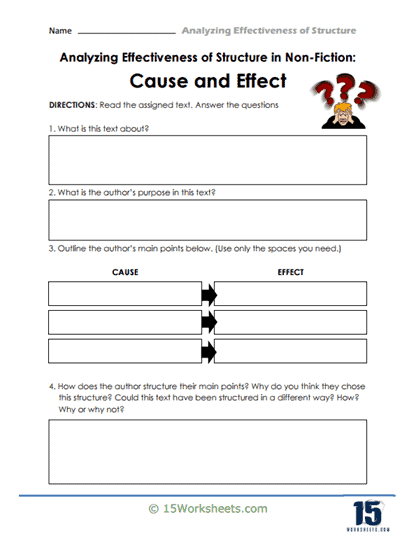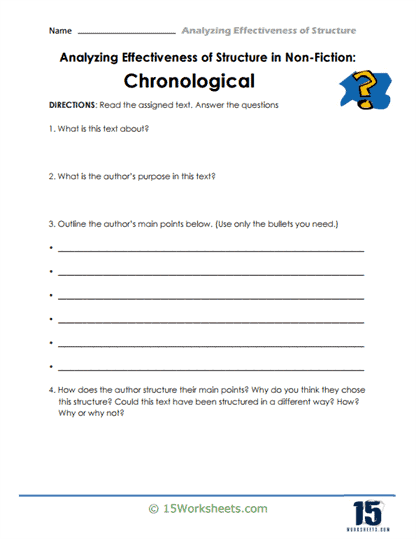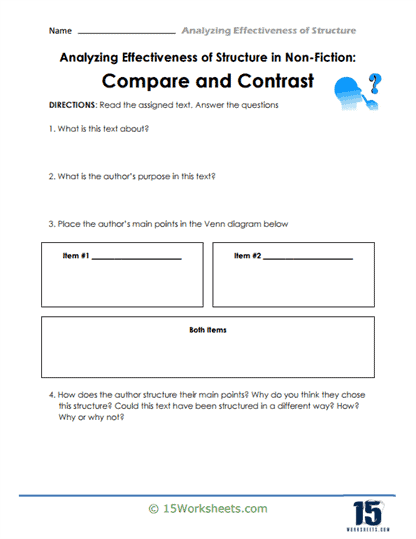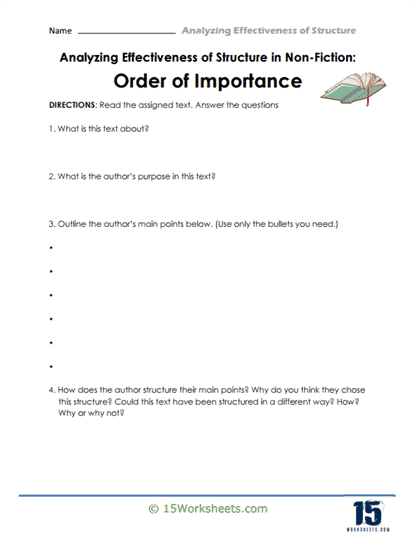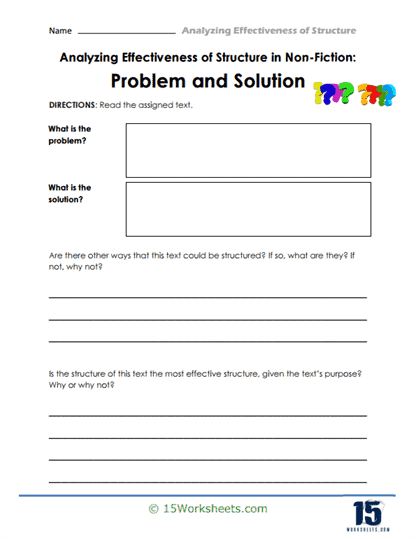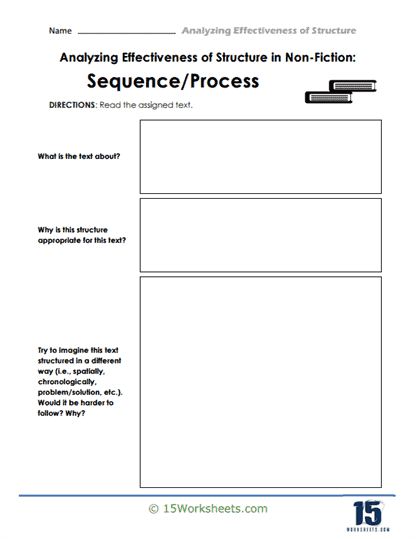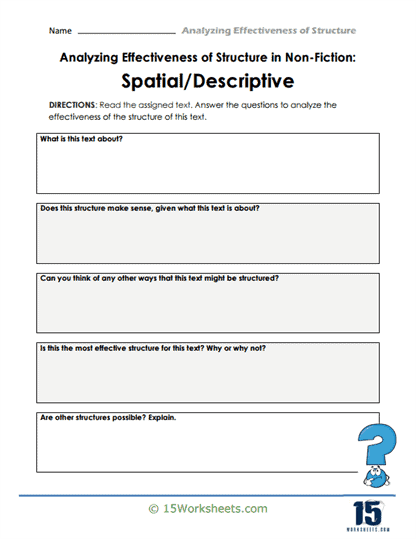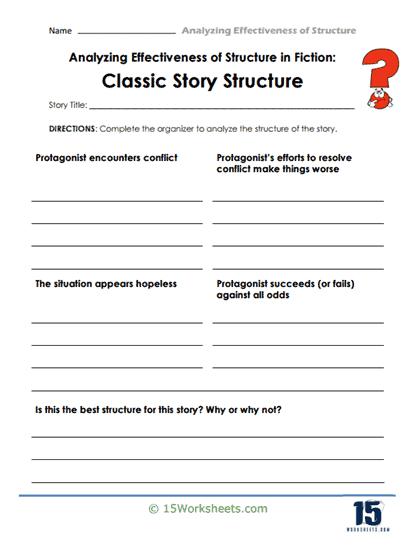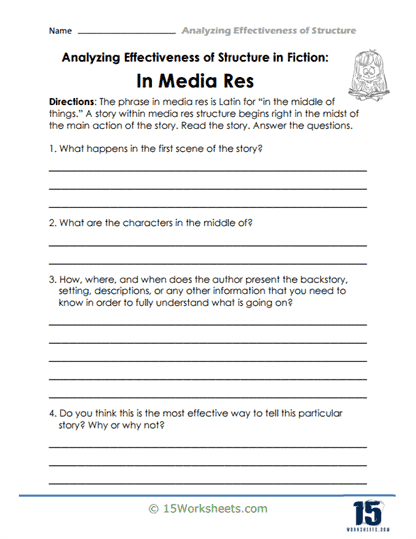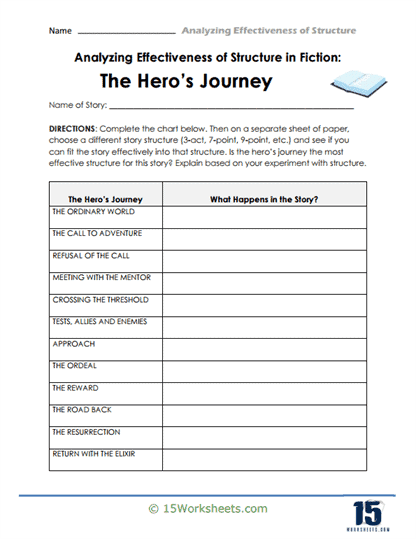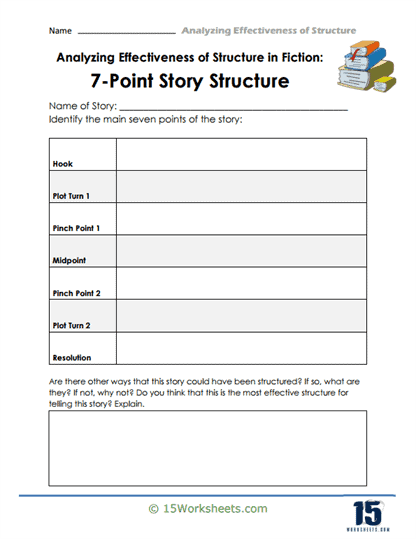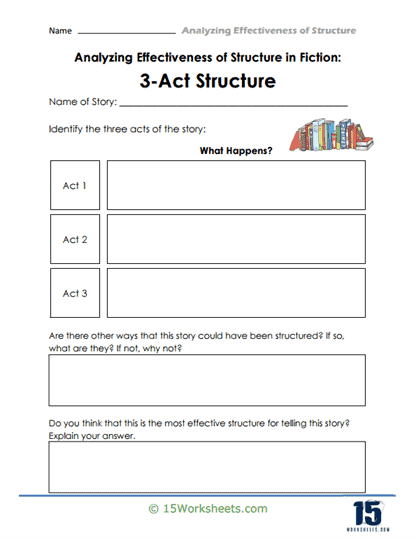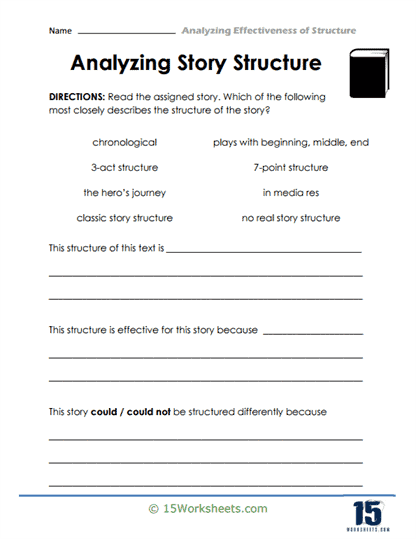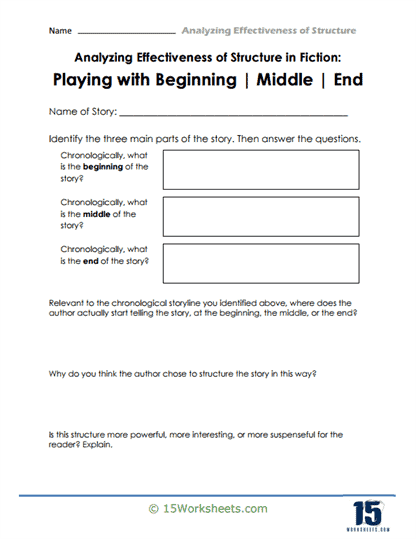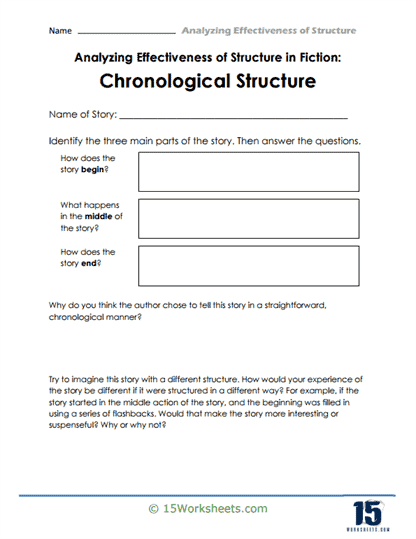Analyzing Effectiveness of Structure Worksheets
All About These 15 Worksheets
These worksheets on analyzing the effectiveness of structure include a series of prompts and questions designed to guide students through a detailed analysis of the organization and structure of a particular text.
In the case of fiction, worksheets may ask students to identify the elements of plot, such as exposition, rising action, climax, falling action, and resolution, and to consider how the author uses these elements to create tension and suspense. Students are also prompted to analyze the structure of the narrative, including the use of flashbacks, foreshadowing, and other techniques to manipulate time and perspective.
For non-fiction texts, these worksheets ask students to identify the organizational structure of the piece, such as chronological, cause-and-effect, or compare-and-contrast. They are also prompted to analyze the use of headings, subheadings, and other formatting devices to help readers navigate the text and understand its main points.
Additionally, these worksheets ask students to evaluate the effectiveness of the structure in achieving the author’s purpose or conveying the intended message. Students are asked to consider alternative ways in which the text could have been organized and to reflect on how these changes would impact the overall effectiveness of the piece.
By working through these worksheets, students can develop their critical thinking and analytical skills, as well as their ability to understand and appreciate the artistry and effectiveness of both fiction and non-fiction texts.
Factors You Can Use to Measure the Effectiveness of a Writer
Some factors you can use to measure a writer’s effectiveness include fluency, content, conventions, and vocabulary. Writing samples should be obtained from the writer across several genres and text structures to determine how comfortable they are with different forms of writing. These factors will help you identify a writer’s strengths and weaknesses, along with the best way to monitor progress and give feedback.
As long as the writing process is seamless and effective, you should be able to measure a writer’s effectiveness. The writing prompt given to a writer should help him produce a piece of writing that is of appropriate length, readable format, and coherence. Here are some methods to use to assess a writer’s work:
1. Fluency
The first writing skill you must look at is fluency: how well can the writer translate his thoughts into his work? You need to determine whether the writer has a concept of all the vital signs, such as letters, grammar, and punctuation. Moreover, check whether the concept of the message is being conveyed well. Are you able to understand the purpose of the writing?
Exceptional writers do not repeat sentences or words too much. They try to build up on their own ideas, which will help them produce a successful piece of writing.
Misspellings, faulty punctuation, poor word choice, and lack of focus are all factors that point to an unskilled writer. These are things to keep an eye out for.
2. Content
In a writing sample, special attention should be paid to the content. Accuracy, cohesion, originality, and organization are all important factors you can use to measure a writer’s effectiveness.
Check to see if the writing sample has a solid beginning sentence, clear ending, and logical sequence of events. You need to see whether they are able to stick to the topic and use clear words to ensure natural flow, such as “therefore,” “moreover,” and “on the other hand.”
You can also check the originality of the writer’s content by figuring out whether humor was attempted or if the writer was able to present a unique point of view.
The organizational structure should be clear enough to allow the writer to move seamlessly through his piece. He should not lack a sense of direction, and his text should not seem confused. Details, events, and ideas should not seem to be strung together by a loose thread.
3. Conventions
To write a communicative piece, a writer should produce a product that can be read easily. Writers need to follow the conventional rules of English, which means that they should use proper grammar, capitalization, punctuation, spelling, and handwriting should be legible.
Even if the writer seems to communicate the message of his work properly, the length of the sample plays an important role, along with the usage of words.
4. Vocabulary
One of the factors you can use to measure a writer’s effectiveness is to evaluate the maturity of the words that he uses, along with the uniqueness of his work. You can do this quantitatively by counting the number of repeated words used throughout the text.
Depending on the type of sample and the writer’s age, vocabulary can be used to determine how eloquent the writer is and whether he understands what he is writing.

